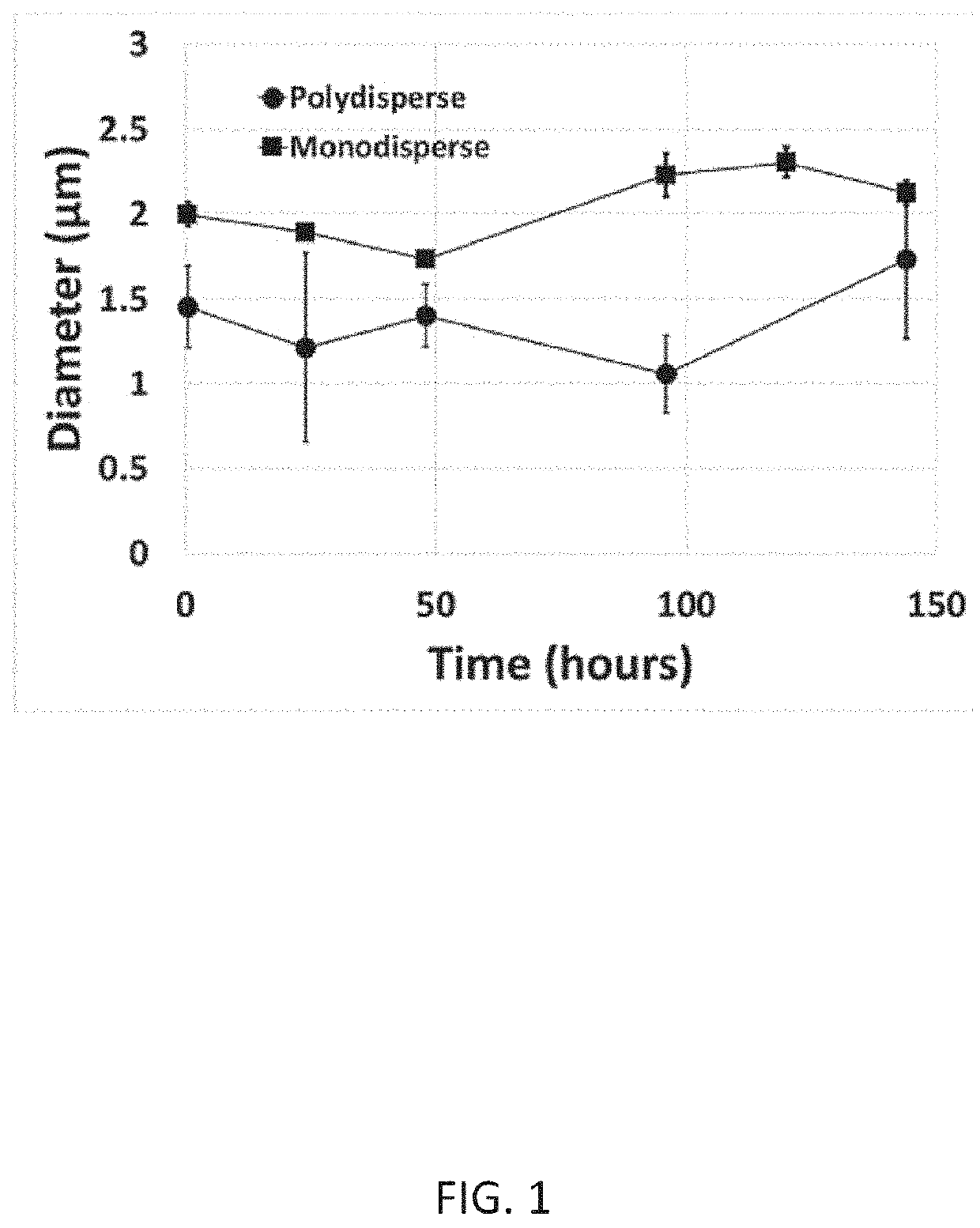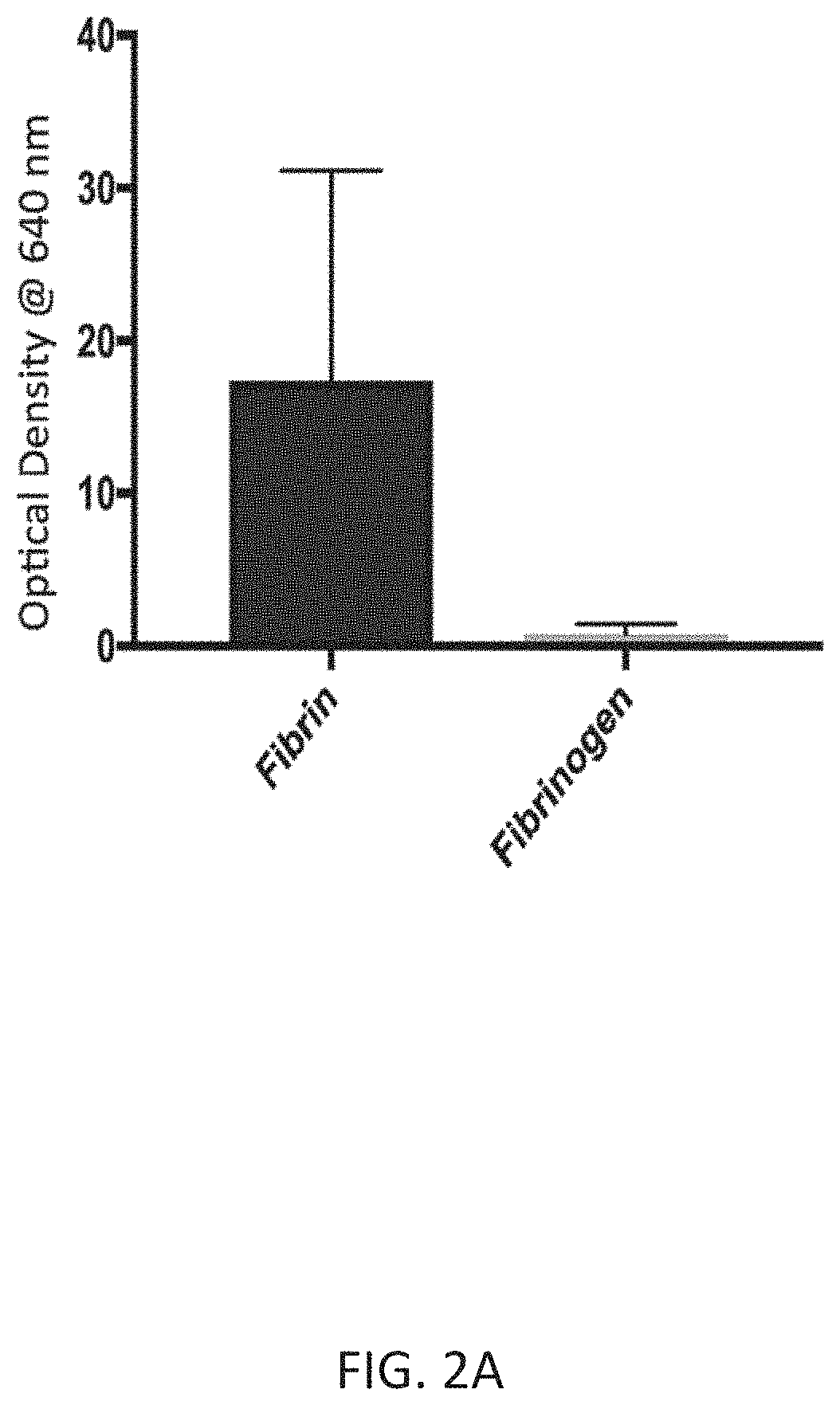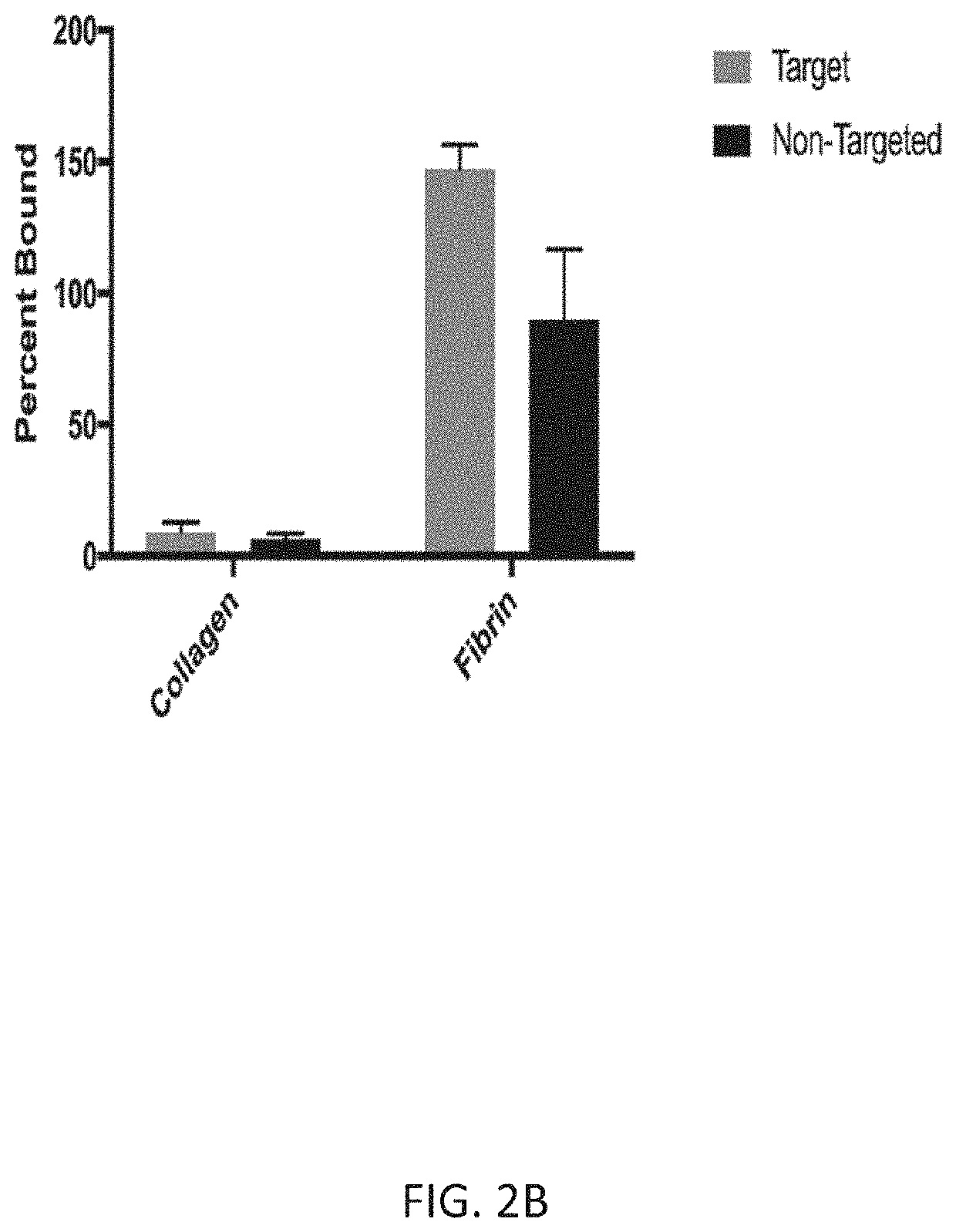Fibrin-targeted polymerized shell lipid microbubbles for diagnostic and therapeutic applications
a technology of lipid microbubbles and lipid microbubbles, which is applied in the field of lipid microbubbles targeted by fibrin, can solve problems such as non-specific highlighting of the vasculatur
- Summary
- Abstract
- Description
- Claims
- Application Information
AI Technical Summary
Benefits of technology
Problems solved by technology
Method used
Image
Examples
example 1
ion
[0179]Targeted contrast ultrasound offers the potential to target specific molecular markers in the body, revealing information about molecular makeup in addition to structure. Information about molecular makeup is crucial in many diagnostic applications, such as surgical adhesions and inflammation in atherosclerosis and angiogenesis in cancer.
[0180]The commercially available microbubble preparations currently available are generally designed to have short half-lives (<10 minutes) because they are intended to be used as transient tracers in the bloodstream (Fisher et al. 2002). While sufficiently stable for vascular-based diagnostics, these types of microbubble preparations are likely to be too labile to use for imaging and breaking up adhesions in the peritoneal cavity, where a contrast reagent must be injected in a relatively small volume into the abdomen and requires some time to permeate throughout the peritoneal cavity to find and adhere to its fibrinous-adhesion targets.
[01...
example 2
on of Polymerized Shell Microbubbles
[0182]Targeted PSMs were formulated from 1,2-distearoyl-sn-glycero-3-phosphoethanolamine-N-[CREKA(polyethylene glycol)-2000] (“CREKA-PEG2000-DSPE”), 1,2-distearoyl-sn-glycero-3-phosphocholine (DSPC) hydrogenated soy (“soy PC”) and 5′-hydroxy-3′-oxypentyl-10-12-pentacosadiynamide (“h-PEG1-PCDA”) in a molar ratio of 15:60:25. Monodisperse CREKA-PSMs were produced using multichannel microfluidic chips with step-emulsification (Li et al. 2015). The same lipid composition as the polydisperse PSM was used with a nitrogen gas core. Nitrogen gas worked just as well with respect to bubble storage stability and ultrasound response as decafluorobutane, and has the advantage of being quite a bit less expensive. Nitrogen was bubbled through multiple narrow channels (5-7 μm) into a solution of dissolved lipids at pressure (˜15 psi). These microbubbles were then collected and UV cross-linked. The mono-disperse CREKA-PSMs were found to range in size from 1.5-2.5 ...
example 3
lymerized Shell Microbubbles Diagnostically and Therapeutically for Treatment of Adhesions Resulting from Abdominal Surgery
[0184]The current treatment regime for adhesions involves the use of implanted adhesion barrier materials, like Seprafilm (Genzyme, Cambridge, Mass.), a hyaluronate-based material that is applied to adhesion-prone tissue at the time of surgery. When used properly, this technique can reduce the incidence of adhesions by half in certain surgeries (Becker et al., 1996). However, the only current treatment for adhesion-caused maladies such as small bowel obstruction and infertility is adhesiolysis, another invasive surgery that can result in formation of additional adhesions. A non-invasive method of adhesiolysis would be especially exciting as it could break this cycle of adhesion development.
[0185]Peritoneal Surgically-Induced Lesion (PSIL) adhesion occurrences can be reduced by performing less invasive surgical procedures (i.e. laparotomy) and using preventative ...
PUM
| Property | Measurement | Unit |
|---|---|---|
| Fraction | aaaaa | aaaaa |
| Fraction | aaaaa | aaaaa |
| Fraction | aaaaa | aaaaa |
Abstract
Description
Claims
Application Information
 Login to View More
Login to View More - R&D
- Intellectual Property
- Life Sciences
- Materials
- Tech Scout
- Unparalleled Data Quality
- Higher Quality Content
- 60% Fewer Hallucinations
Browse by: Latest US Patents, China's latest patents, Technical Efficacy Thesaurus, Application Domain, Technology Topic, Popular Technical Reports.
© 2025 PatSnap. All rights reserved.Legal|Privacy policy|Modern Slavery Act Transparency Statement|Sitemap|About US| Contact US: help@patsnap.com



